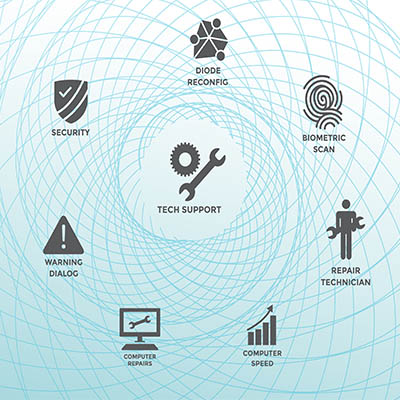Ensuring the safety and security of digital data is a key component to sustaining a smooth functioning business. In light of the increasing reliance on digital information, the implementation of robust Data Backup and Disaster Recovery strategies have become more important than ever. This month, we aim to discuss key components of an effective disaster recovery strategy, emphasizing the importance of safeguarding business data backups.
The Significance of Data Backup
Modern businesses heavily depend on data, considering it the backbone of their daily operations, encompassing customer information, financial records, and more. Despite the critical role data plays, businesses are vulnerable to unforeseen events that could lead to data loss, ranging from natural disasters like floods or fires to cyberthreats such as malware, phishing, and ransomware; any of which can have devastating consequences on a company’s stability. This is why establishing a comprehensive disaster recovery strategy that incorporates best practices for data backup is crucial to protecting your business.
The primary objective of data backup is to create duplications of vital information, ensuring its retrieval in the event of data loss. A well-designed backup system serves as a safety net, preventing critical data from becoming irretrievable during disasters or other unforeseen events that are out of individuals’ control.
Let’s look at some key benefits of a data backup platform:
- Protecting Critical Data – A robust backup system shields businesses from data loss caused by natural disasters, cyberthreats, or hardware failures.
- Recovering Lost Data – Comprehensive data backup plans facilitate the recovery of data lost due to human errors, system failures, or external factors.
- Preventing Financial Losses – Without proper backup, data loss can result in significant financial implications, including sales loss, decreased productivity, and disruptions in business continuity.
Various scenarios can lead to data loss, including human errors, hardware malfunctions, cyberattacks, software corruption, and theft or loss of physical devices storing business data. Understanding these scenarios enables businesses to tailor their disaster recovery strategies to address unique needs and risks.
Best Practices for Successful Data Backup
Implementing a robust data backup strategy is not only vital for business operations but also crucial for safeguarding critical information against unforeseen disasters. The following best practices should be followed:
- Schedule Regular Backups – Conduct automated backups at specific intervals to ensure the safety and consistency of business data.
- Secure Your Backup – Implement encryption and access authentication measures to protect backup data from unauthorized access.
- Test Your Backup Plan – Regularly test and monitor backup systems to identify and address potential issues before they escalate.
- Follow the 3-2-1 Rule – Maintain three copies of data in two different formats, with one offsite backup, ensuring redundancy and data availability.
- Have a Disaster Recovery Plan – Develop and document a comprehensive disaster recovery plan outlining procedures for data recovery, hardware restoration, and data migration.
Incorporating these best practices into a business continuity plan ensures the resilience of operations in the face of data loss events. Selecting an appropriate backup solution, conducting regular testing, securing backups, and having a well-documented disaster recovery plan are essential components of a proactive approach.
For customized technology support and assistance contact North Central Technologies today at 978-798-6805.







